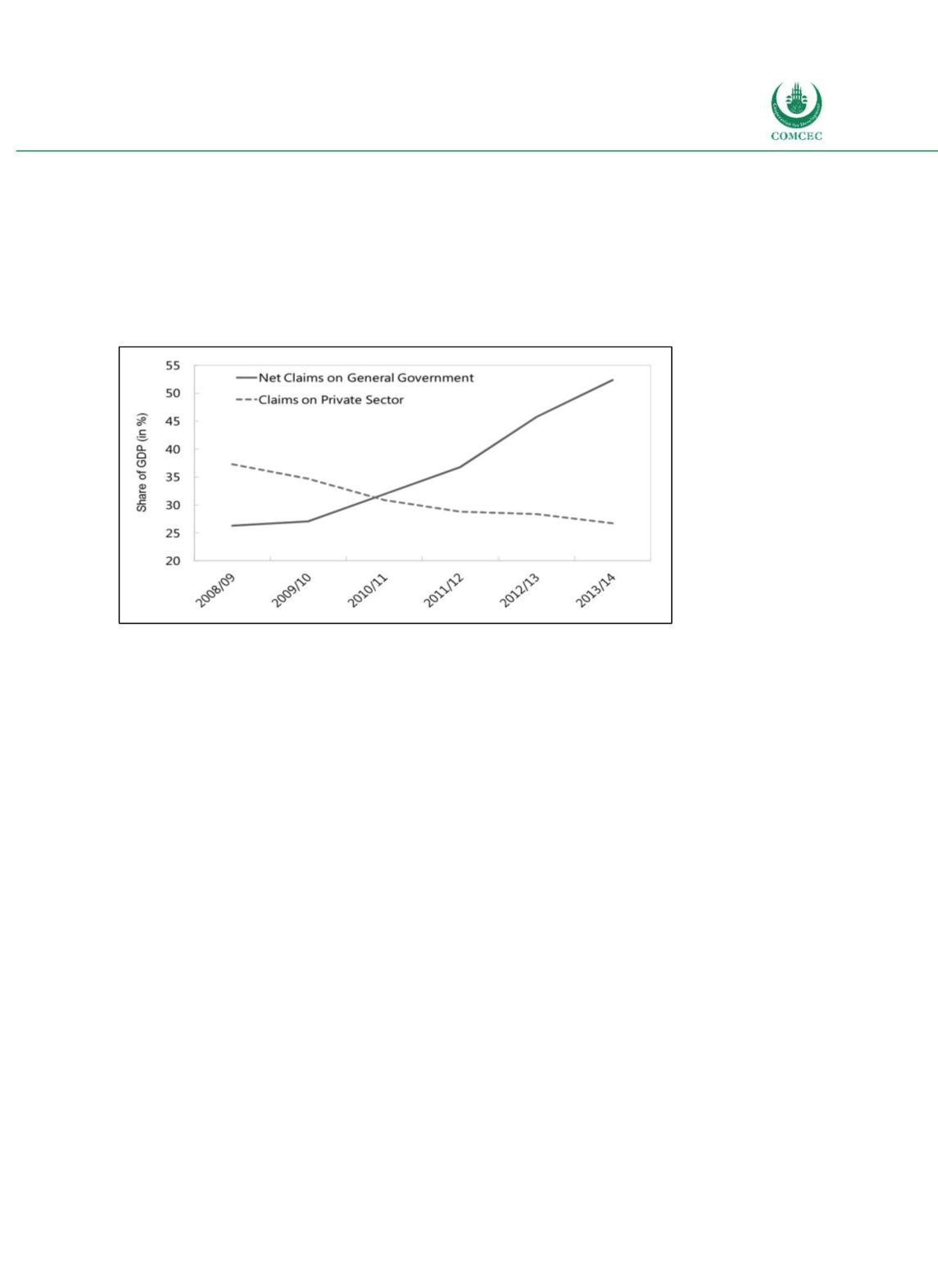

Improving Public Debt Management
In the OIC Member Countries
103
(Alexbank 2015). Private banks and foreign bank branches hold about 29% of the TBills.
Regarding TBonds, 75.1% are held by banking institutions. High interest rates on government
debt and preferences for safe lending reduce the incentives of banks to provide credit to the
private sector, leading to a crowdingout of bank loans to the private sector. While net claims
on the general government have steadily increased since 2009, claims on the private sector
have declined (see Figure 415). Banks tend to invest in instruments with shorter maturities
to avoid asset and liability mismatches with shortterm bank deposits.
Figure 4-15: Egypt - Credit to the Economy
Source: IMF (2015, p. 10).
To improve the domestic debt market the government is carrying out several reforms. On the
primary market a new issuance strategy is being developed, Floating Rate Notes (FRNs) will be
reintroduced and investments banks will be included as primary dealers. On the secondary
market, the government is establishing new electronic trading and auction platforms,
constructing an official yield curve for government securities, using market mechanisms such
as Repos and ShortTerm Liquidity Facilities, and including market players such as nonprimary dealer banks and bond dealers. Furthermore, the Primary Dealers Decree reviews the
code of conduct (duties and incentives) and market making activities, and quotes obligations.
Foreign borrowing
External public debt amounted to about 7.9% of GDP in 2015. Creditors of external debt are
foreign governments (mainly Paris Club bilateral debt) and regional and international
organizations such as the IMF, the World Bank, the Islamic Development Bank and the African
Development Bank. These organizations provide loans with to finance specific investments
and development projects. External debt also includes deposits held by the Egyptian central
bank (Alexbank 2015). The MTDS envisages raising funds from the international capital
markets in the amount of $35 billion on a yearly basis over the period 20152018 (MoF 2015).
External debt is mainly denominated in U.S. Dollars (56.1%), Euro (21.4%) and Japanese Yen
(6.6%). The share of external debt in U.S. Dollars has increased over the last decade, while the
share denominated in Euro and Japanese Yen have decreased (see also Figure 413).
















